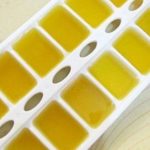Honey is a product derived from bees collecting nectar from flowers, ripe fruits, and young leaves. The type of honey produced corresponds to the type of flora the bees gather from. Each variety of honey has unique characteristics and benefits. Let’s explore the different types of honey sourced from various flowers below.
1. Benefits of Honey
Honey boasts a multitude of uses in both manufacturing and food industries. In food, honey serves as a natural sweetener, while in manufacturing, it is used as a fragrance and moisturizer in soaps and cosmetics. Some common benefits of honey include:
- Reducing the risk of heart disease
- Aiding digestion
- Improving skin health
- Healing burns and wounds
- Soothing children’s coughs
- Lightening scars
- Boosting energy and immune system
 Honey delights with its exquisite flavor, and there are myriad ways to incorporate this sweet treat into your daily life.
Honey delights with its exquisite flavor, and there are myriad ways to incorporate this sweet treat into your daily life.
For further reading: Honey: Unlocking its miraculous benefits, usage, and precautions
2. The Best Types of Honey Available Today
Wildflower Honey
 Wildflower Honey
Wildflower Honey
First on our list is wildflower honey, a natural treat sourced from various flowers in the wilderness, free from human intervention. This type of honey is a rare find in the market and is highly sought-after by consumers. However, some commercially available “wildflower honey” is actually produced by bees kept in forests, rather than being truly wild.
Manuka Honey
Manuka honey is produced by bees that pollinate the flowers of Leptospermum scoparium, commonly known as the manuka bush. This variety of honey originates from New Zealand.
 Manuka Honey
Manuka Honey
Peppermint and Poppy Honey
 Peppermint and Poppy Honey
Peppermint and Poppy Honey
This type of honey is predominantly found in the northern provinces of the country. Its high price tag is due to the limited annual yield, making it a rare and coveted treat.
Peppermint honey boasts a light green hue, making it a visually appealing delicacy. Genuine peppermint honey is scarcely available in the market.
Longan and Lychee Honey
 Longan and Lychee Honey
Longan and Lychee Honey
Longan and lychee honey are highly regarded for their superior quality, pleasant aroma, delicate sweetness, and attractive golden color. They are also affordably priced and widely available, making them a popular choice for consumers.
Coffee, Rubber, and Cocoa Honey
 Coffee, Rubber, and Cocoa Honey
Coffee, Rubber, and Cocoa Honey
At first glance, this variety resembles longan honey, but it contains a higher concentration of sugars. In terms of nutritional value, coffee and rubber honey fall short compared to longan honey, which is why they are primarily exported rather than consumed domestically.
Melaleuca Honey
 Melaleuca Honey
Melaleuca Honey
Melaleuca honey is harvested after the melaleuca flowers bloom, typically around the fourth lunar month. This is the ideal time for honey collection, as there is no rainfall during this period. Additionally, melaleuca trees are rarely sprayed with pesticides, making this honey a safe and healthy option, especially beneficial for respiratory health.
It has a distinctive, subtle fragrance and a mild sweetness. However, it’s best to consume this honey within 2-3 months, as it tends to develop a strong odor and darken in color over time.
Orange and Mandarin Honey
 Orange and Mandarin Honey
Orange and Mandarin Honey
This variety of honey is renowned for its positive effects on the nervous system and is considered an excellent natural sedative.
Honey from St. John’s Wort
Also known as golden clover honey, this variety is derived from the St. John’s Wort plant. It has a subtle fragrance, a light golden color, and a transparent appearance. Rich in nutrients and vitamins, this honey is highly beneficial for overall health and immune system enhancement.
 Honey from St. John’s Wort
Honey from St. John’s Wort
3. How to Choose Pure Honey
There are several simple ways to
- Water test: Place a drop of honey in a cup of water. Pure honey will sink to the bottom, while adulterated honey will dissolve.
- Paper test: Pure honey will not absorb into a piece of paper, whereas fake honey will leave a wet mark.
- Bread test: Spread some honey on a piece of bread. Pure honey will make the bread harder and crispier within a few minutes, while adulterated honey will not have this effect.
 How to Choose Pure Honey
How to Choose Pure Honey
We hope that after reading this article, you can select the type of honey that best suits your preferences and health needs. Here’s to your health and the wonderful benefits of honey!
Exploring the Advantages of Cleansing with Honey
As a natural alternative to traditional face cleansers, honey is widely touted for its powerful beauty benefits. From treating acne to lightening age spots, honey is a top ingredient in many DIY face wash recipes. In this article, we’re exploring the potential advantages of using honey as a face wash.
Skin Care Tips for the Post-Lunar New Year: Regain Your Glow and Feel Refreshed!
Are you feeling the aftermath of the hustle and bustle of Tet festivities on your skin? With cold temperatures, time spent outdoors, and all the excitement, it may not be looking its best. Don’t fret – follow the tips laid out in this article to restore your skin to its smooth, bright, and flawless look!



































